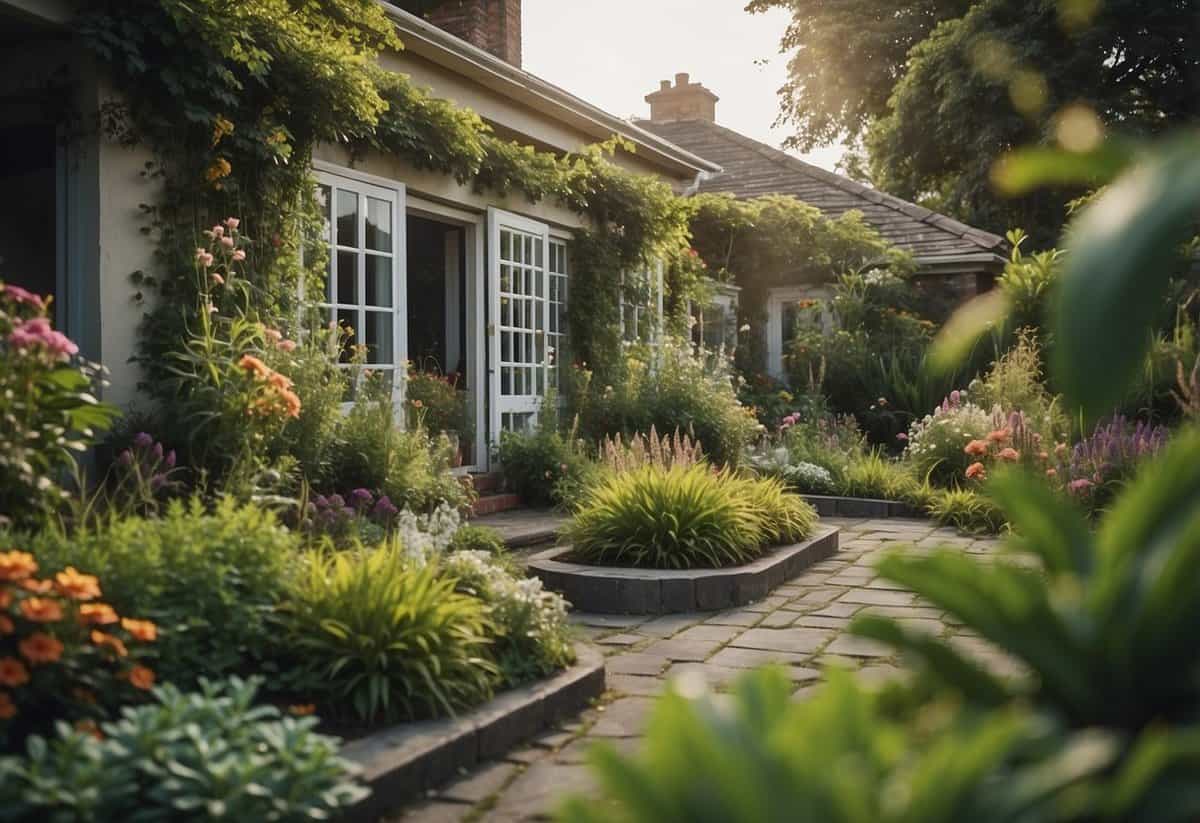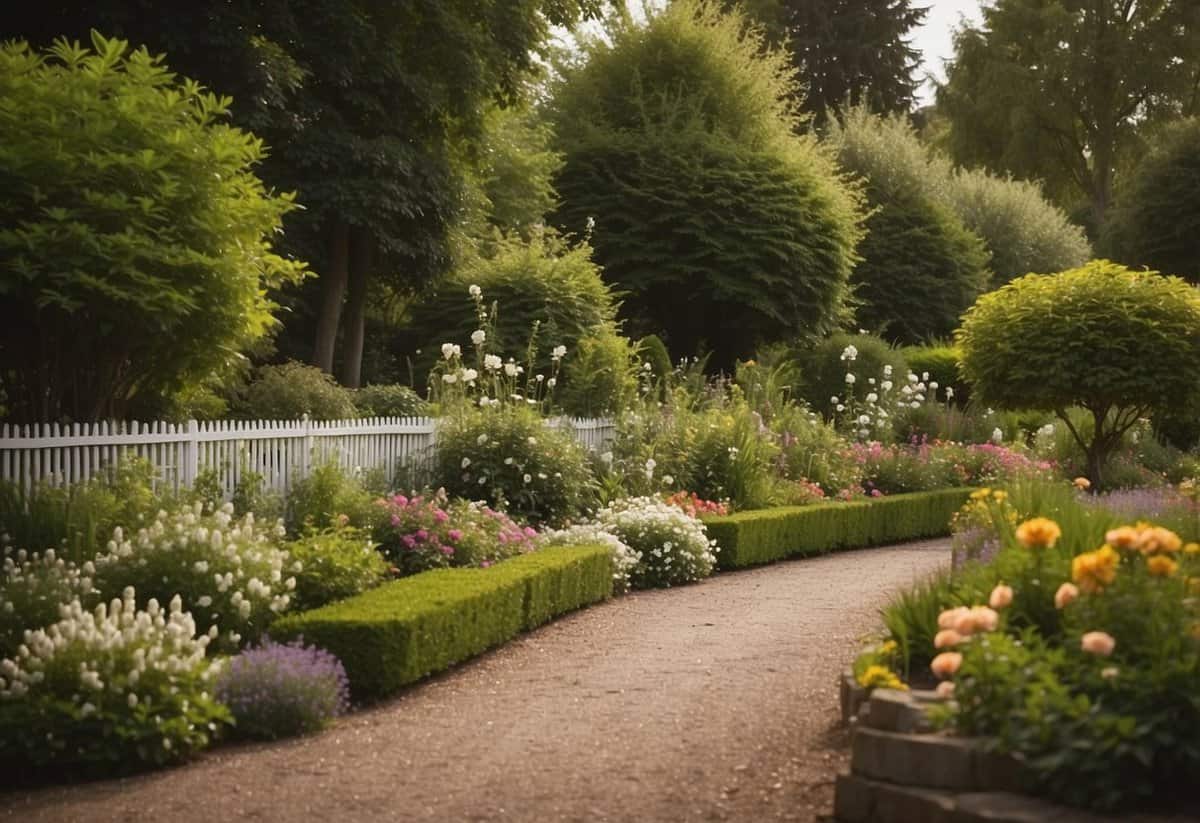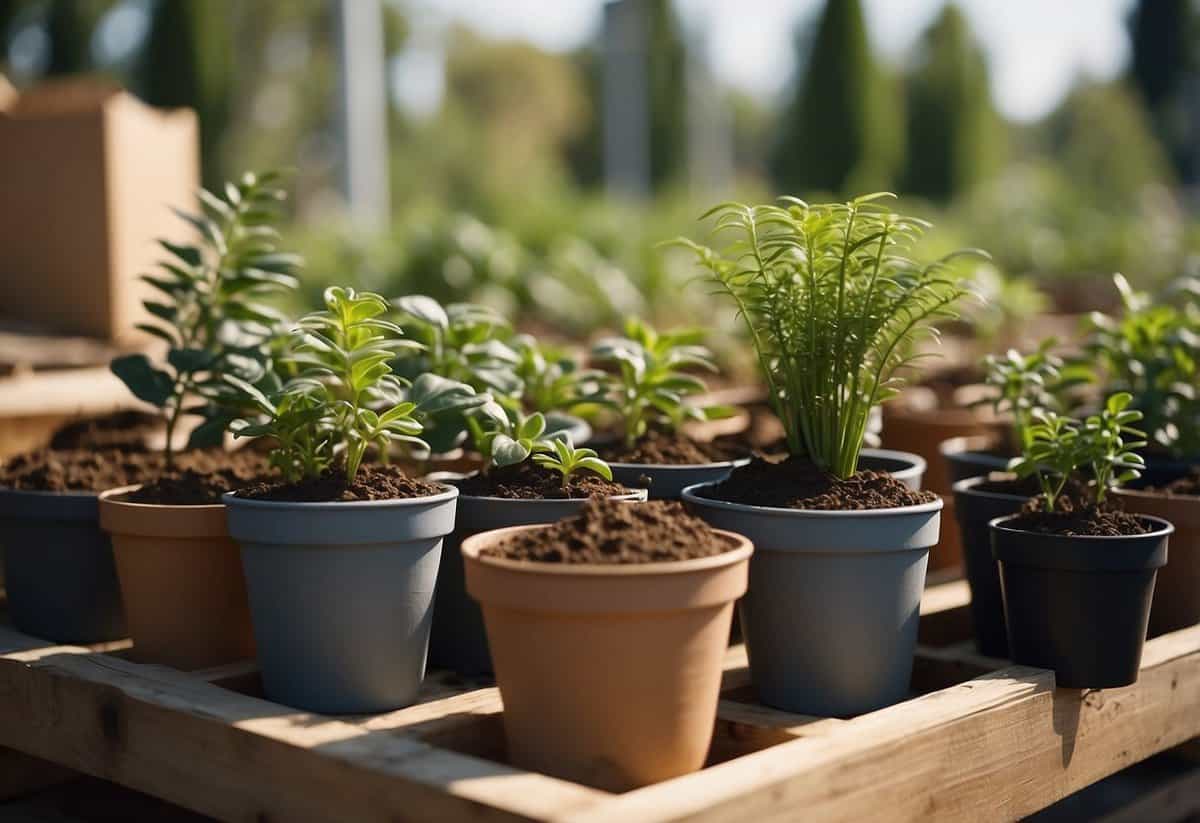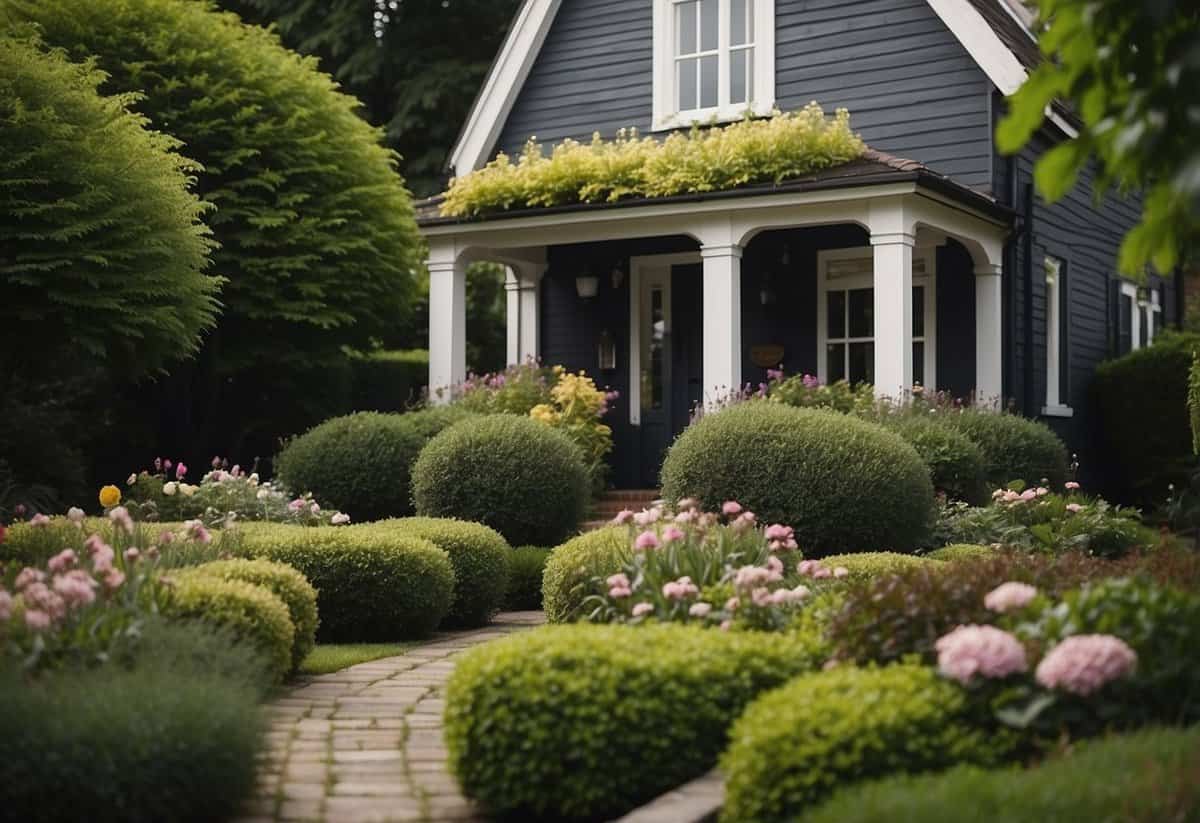Can I Take Plants from My Garden When I Sell My House? Tips and Guidelines
Selling your home can be a big step, especially when it comes to deciding what stays and what goes. If you’re a gardening enthusiast, you might be wondering if you can take your beloved plants with you when you move. Yes, you can take certain plants from your garden when you sell your house, but there are some rules and negotiations involved.

Buyers might expect in-ground plants to remain with the property, so it’s important to discuss this upfront. Items like potted plants, planters, and outdoor furniture are generally free to take along. Make these decisions clear while drafting the sales agreement to avoid any last-minute surprises and to keep the sale smooth.
Remember, it’s all about communication and transparency. If there are specific plants you want to take, let your real estate agent know. This way, potential buyers are aware and can plan accordingly. Happy moving and may your new garden flourish!
Understanding Fixtures vs. Personal Property

When selling a house, it is crucial to know what items stay and what can be taken with you. This depends on whether those items are considered fixtures or personal property under real estate law.
Defining Fixtures in Real Estate
Fixtures are items that are attached to the property in a way that would damage the property if removed. Examples include light fixtures, built-in furniture, and permanently installed appliances. These items stay with the property when you sell it. If you have bolted down bookcases or installed custom mirrors, they are fixtures. Additionally, anything that involves wiring or plumbing modifications falls into this category.
What Qualifies as Personal Property?
Personal property, also known as chattel, is movable. You can take it when you move. This includes furniture, curtains, and rugs. For example, your couch, dining table, and freestanding lamps are personal property. Items like blinds and curtain rods could vary but are usually considered fixtures due to their attachment to the property. If an item can be easily removed without altering the home, it qualifies as personal property.
The Grey Area of Plants and Landscaping Features
Plants and landscaping elements are tricky. While potted plants are personal property and can be taken, planted trees, shrubs, and garden beds are usually considered fixtures. Your beautiful rose bushes, once planted in the ground, typically stay with the home. However, specific arrangements can be made in the purchase agreement when you sell. If you want to take some plants or special landscaping features with you, make it clear in the contract.
By understanding these differences, you can avoid disputes and make sure both you and your buyer are on the same page.
Legal Aspects of Garden Property During a Home Sale

When selling your home, it’s important to understand what you can legally take from your garden. Rules can vary by location, and both sellers and buyers should be clear about what’s included in the sale. Clear communication can prevent misunderstandings at closing.
State and Local Regulations
Each state and locality has its own rules regarding what you can take from your garden when you sell your home. In some places, like California, homegrown produce can be sold from your property without a license, but selling at a farmers’ market or to a restaurant requires one. Meanwhile, states like Pennsylvania may have different regulations.
These rules can also affect what you can legally remove before the sale. Items like built-in planters or garden structures might be considered fixtures that must stay with the property. It’s best to check local real estate laws and perhaps consult with a lawyer to make sure you understand your rights and obligations.
Inclusions and Exclusions in Real Estate Contracts
In real estate contracts, it’s crucial to specify which items are included and excluded in the sale. Fixtures that are attached to the property, such as in-ground plants or anchored garden structures, are usually included. If you want to take specific plants with you, list them as exclusions in the contract.
Negotiate these details early to avoid disputes later. For instance, a favorite tree or a rare plant collection should be mentioned clearly. Both you and the buyer need to agree on what’s included. Clarity in the contract helps prevent legal issues at closing and ensures a smoother transition for both parties.
By addressing these aspects early on, you can make the selling process more straightforward and avoid any potential conflicts regarding your garden property.
Pre-Sale Garden Preparation

When getting ready to sell your home, deciding which plants stay or go can affect both the property’s value and buyer interest. It’s important to be clear on what you’ll leave behind and how to manage any special plants or trees you wish to relocate.
Deciding What to Keep and What to Leave
Choosing what to keep in your garden and what to take with you requires careful thinking. Some garden items, including plants and trees, can add value to your home. A well-maintained garden can boost curb appeal and attract buyers.
-
Evaluate the Investment: If you’ve invested time and money into your landscaping, you might decide to take certain plants with you. This is especially true for rare or exotic plants.
-
Consider Buyer Preferences: Simple, low-maintenance gardens are often more appealing to potential buyers. Overgrown or high-maintenance gardens can look like extra work.
-
Communicate Clearly: Make a list of what will stay and what will go. This list should be clear to home buyers. Items like pots and removable planters can easily be taken. Removable garden items should be marked clearly.
How to Handle Specialty Plants or Trees
Specialty plants and trees can be significant investments, either financially or emotionally. Moving them requires special care to ensure they survive and thrive in their new location.
-
Plan Ahead: Start preparations well before your move. You’ll need to consider the best time to transplant, typically when the plant is dormant.
-
Use Proper Techniques: For trees, pruning the roots a year before moving can help them adjust. Smaller plants might need careful potting. Transplanting divisions can be an option for perennials.
-
Hire Experts if Necessary: For large trees or valuable plants, hiring a professional can ensure they’re moved safely. This can be essential for rare specimens.
By thoughtfully managing your garden before selling, you can make the process smoother and more attractive to potential buyers.
Moving Your Garden: Practical Tips and Considerations

Taking your garden plants with you when you move might seem challenging, but with the right preparation, it is completely doable. Here are some practical tips on how to effectively transplant your plants, address pest concerns, and comply with USDA regulations during the move.
Transplanting Tips for Homeowners
When planning to move your garden plants, start by watering them well a few days before the move. This helps them cope with the stress of being uprooted. Repot houseplants into plastic containers around three weeks before the move. This prevents damage from breakable pots and makes them easier to carry.
For outdoor plants, dig them up the day before you move. Transfer them to rigid plastic pots of the same size to make them easier to transport. If you’re moving trees, make sure to dig a wide enough hole to get most of the root system. Use a tarp for smaller plants and shrubs to keep the soil together and make transportation simpler.
Addressing Pests and Natural Resource Concerns
Before you move, it’s important to check your plants for pests. Look for signs of insects or diseases and treat them accordingly to avoid bringing pests to your new home. Regular inspections are crucial, especially for houseplants which can harbor hidden insects.
Before moving plants ethically, consider the impact on natural resources. Avoid moving plants that are considered invasive in your new location. This helps protect local plant life and supports environmental health. You might need to leave infected plants or those with extensive pest problems behind to ensure a healthy start in your new garden.
Understanding USDA Regulations
When moving plants across state lines, be aware of USDA regulations. Some plants and trees are banned in certain states due to pest or disease risks. You can find this information on the USDA website to ensure you comply with regulations.
For example, citrus trees often have restrictions due to the risk of spreading pests and diseases. Inquire about any required certifications or inspections. This ensures your move goes smoothly and adheres to legal guidelines. You might also need to consider the relocation of outdoor furniture or other garden items that could harbor pests.
By keeping these tips in mind, you can make your garden’s transition to your new home as smooth and stress-free as possible.
Enhancing Property Appeal with Garden Features

When selling your home, using garden features to boost appeal can make a big difference. Focus on showcasing high-quality elements and negotiating which items stay or go with the sale.
Highlighting Attractive Garden Elements to Prospective Buyers
To catch the eye of buyers, ensure your garden elements are well-maintained. Keep plants pruned and healthy. Add colorful flowers to brighten the space. Features like window boxes can add charm.
Outdoor furniture and light fixtures make the garden look inviting. Consider adding:
- Stylish planters
- Attractive fences
- Decorative rugs
All these items create a welcoming atmosphere, which can help in selling your home.
The Value of Outdoor Living Spaces
Outdoor living areas add significant value to your home. Buyers often look for relaxing, functional spaces. Arrange your garden to include spaces for dining or lounging.
Include:
- Grills and grilling areas
- Comfortable seating with weather-resistant cushions
- Outdoor rugs
Mountain or coastal views can be a selling point, so highlight any natural attractions. A well-arranged space with these features can make your property more desirable.
Negotiating Garden and Outdoor Features in the Sale
When selling your home, decide which garden features you want to take with you. Clearly state what stays and what goes. Items like chandeliers and outdoor furniture can be part of the negotiation.
Create a list:
- Fixtures (e.g., light fixtures, fences)
- Planters and pots
- Grills and outdoor rugs
Discuss these items with your realtor. Being clear about these features helps avoid misunderstandings during the negotiation process.







